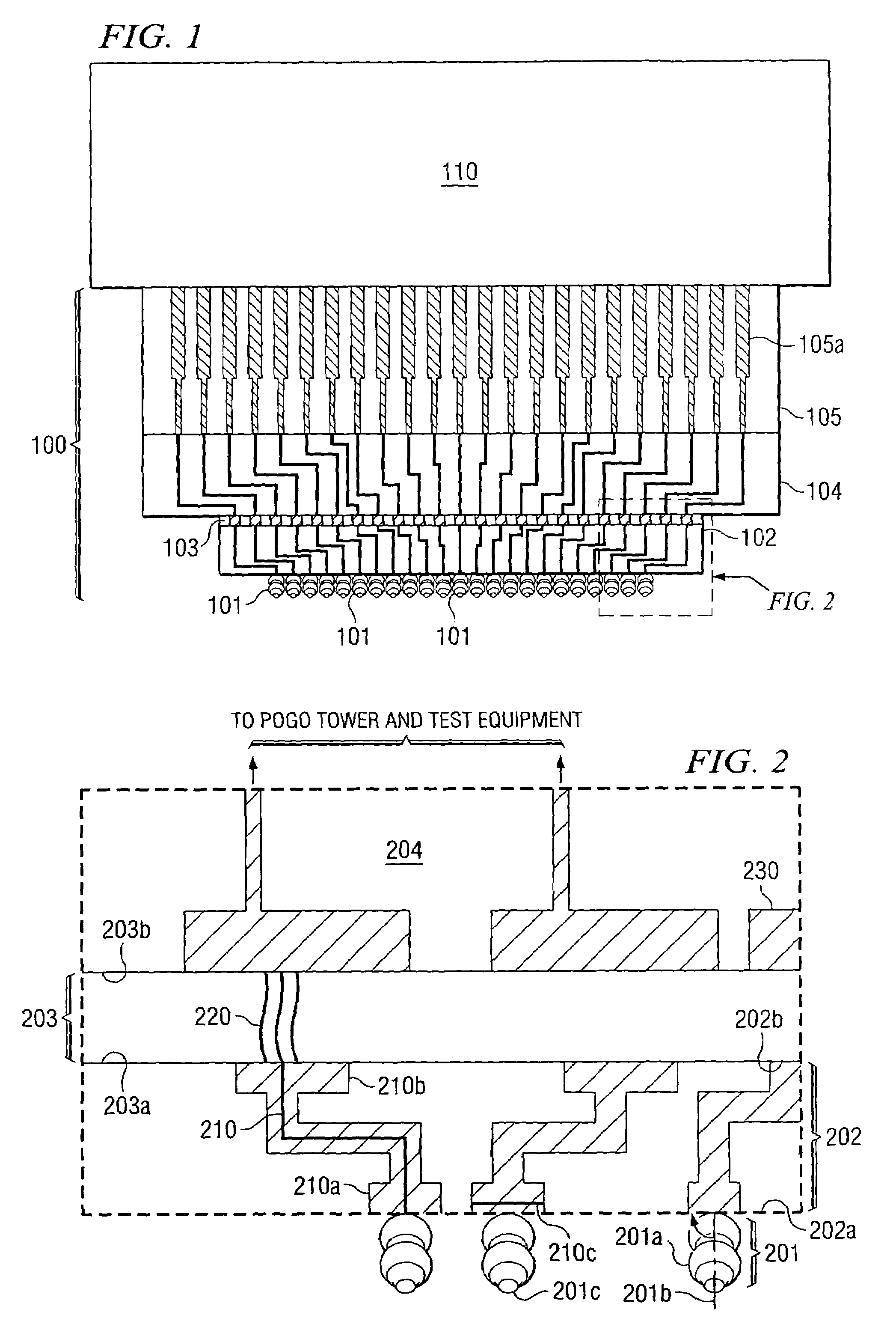Resilient probes for electrical testing
a technology of resistive probes and probe cards, which is applied in the direction of electrical testing, measurement devices, instruments, etc., can solve the problems of high cost of probe cards, sensitive handling, and excessive labor of assembly of probe cards, and achieve the effect of simplifying the subsequent processing steps of semiconductor devices and inexpensive test cards
- Summary
- Abstract
- Description
- Claims
- Application Information
AI Technical Summary
Benefits of technology
Problems solved by technology
Method used
Image
Examples
Embodiment Construction
[0025]FIG. 1 shows schematically a cross section through an apparatus for testing according to the invention. The apparatus is generally designated 100, and the test equipment 110. Usually, the apparatus is electrically and mechanically connected to the test equipment by a plurality of pins (not shown on FIG. 1) which are pushed into the corresponding sockets of the equipment.
[0026]The apparatus 100 consists of several portions: At the surface facing the device-to-be-probed are the actual probes 101, which establish the electrical contacts to the device test pads. The composition, orientation and distribution of probes 101 are discussed in more detail in FIGS. 2 thru 8. Probes 101 are attached the insulating holder 102, which is traversed by metal-filled vias and described in more detail in FIGS. 2 and 7. Holder 102 in turn is attached to a sheet 103 of resilient insulating material, which is traversed by conductive traces and discussed in more detail in FIGS. 2 and 7. Resilient she...
PUM
 Login to View More
Login to View More Abstract
Description
Claims
Application Information
 Login to View More
Login to View More - R&D
- Intellectual Property
- Life Sciences
- Materials
- Tech Scout
- Unparalleled Data Quality
- Higher Quality Content
- 60% Fewer Hallucinations
Browse by: Latest US Patents, China's latest patents, Technical Efficacy Thesaurus, Application Domain, Technology Topic, Popular Technical Reports.
© 2025 PatSnap. All rights reserved.Legal|Privacy policy|Modern Slavery Act Transparency Statement|Sitemap|About US| Contact US: help@patsnap.com



